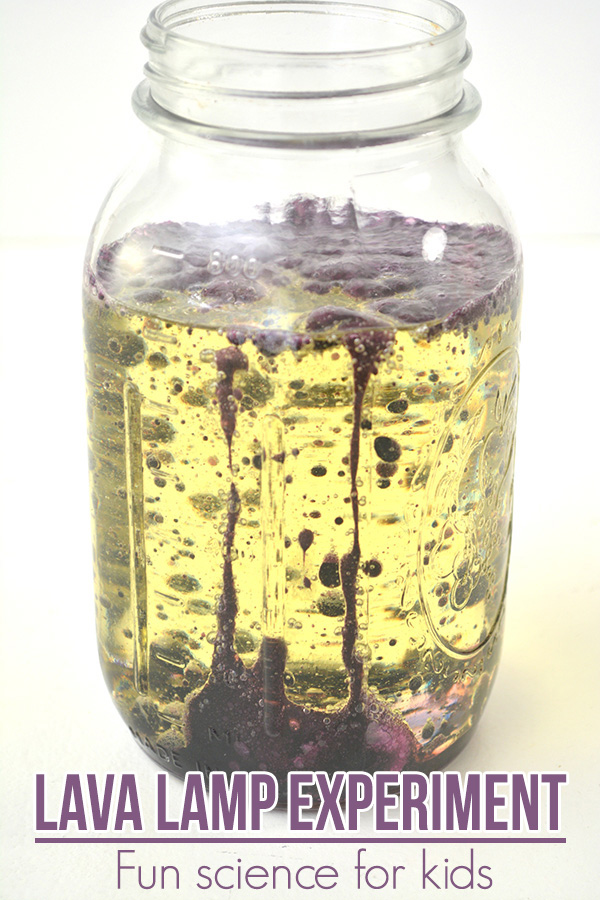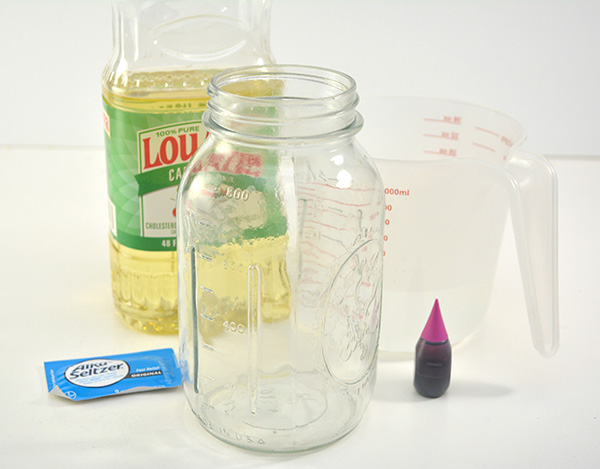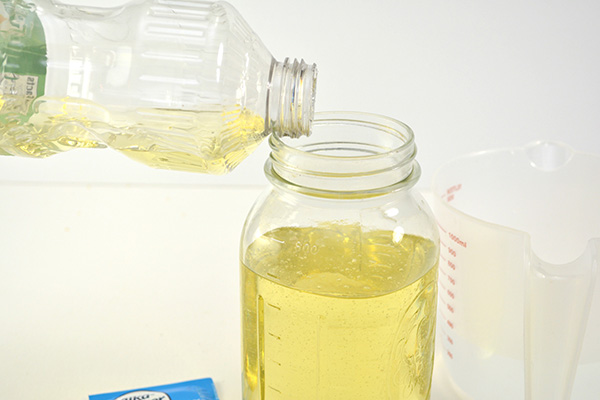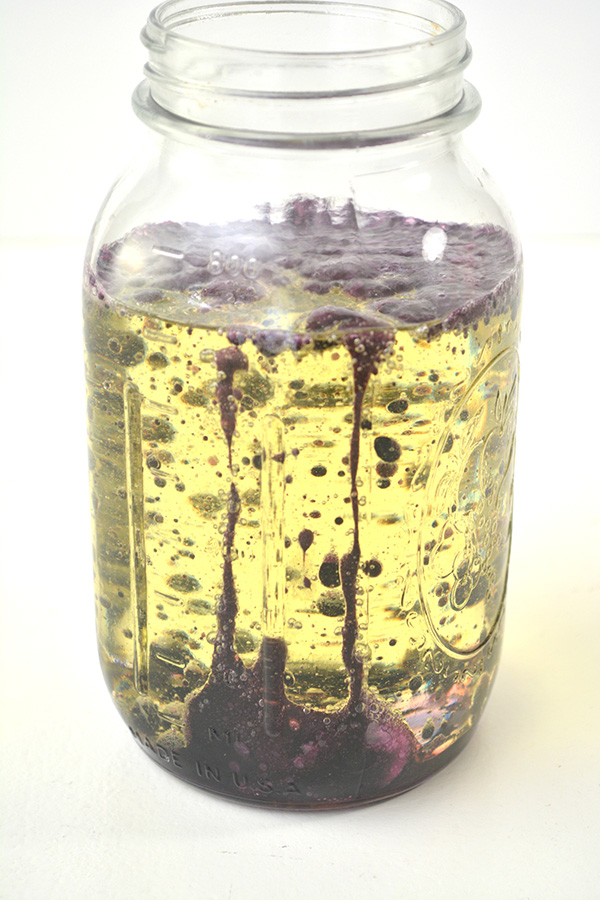DIY Lava Lamp Experiment: Simple Science for Kids
I was a super groovy teenager with a cool, blobby pink lava lamp in my bedroom – they were all the rage in my circle of friends! This fun lava lamp experiment is also super cool and (unlike my lava lamp!) a great, hands-on science experiment for kids that explores the properties of liquids, liquid density and an awesome chemical reaction. On top of that, it’s super fascinating to watch!
Oil & Water Lava Lamp Experiment for Kids
Materials:
- Clear jar or container
- Food coloring
- Canola oil
- Water
- Alka Seltzer tablets
Experiment Procedure:
1. Begin by filling your jar or clear container about 2-3 of the way full with canola oil.
2. Pour in a little bit of water, no more than a fourth of a cup is needed for a large jar.
3. Drop in some food coloring, this works best with at least 40 drops for a large container.
4. Add two Alka Seltzer tablets to the jar, and watch as they react to create a lava lamp display with the drops of food coloring.
5. If the movement in the jar stops and you want to start it back up again, simply drop another tablet in, and the movement will continue.
Why Does a Homemade Lava Lamp Work?
If you’ve already checked out our Oil and Water Experiment, you’ll know that oil and water aren’t the best of friends – they just don’t mix. Oil is less dense than water and rests on the water’s surface (our density experiment with liquids is fabulous for exploring this phenomena). As you add the Alka-Seltzer tablets to your homemade lava lamp, they react chemically with the water to produce bubbles of carbon dioxide gas. This gas is less dense then both the water and the oil and so the bubbles rise up through the liquids. As the bubble moves through the water into the oil layer it takes a small amount of water with it and then when the bubble reaches the surface of the oil and pops, the water falls back through the oil (because of it’s heavier density). Watching this process is super cool – so fascinating!
For more science fun with Alka-Seltzer, check out these Exploding Rockets at Little Bins for Little Hands. And if you don’t have Alka-Seltzer, Hands On As We Grow shows you how to make a lava lamp without it.







